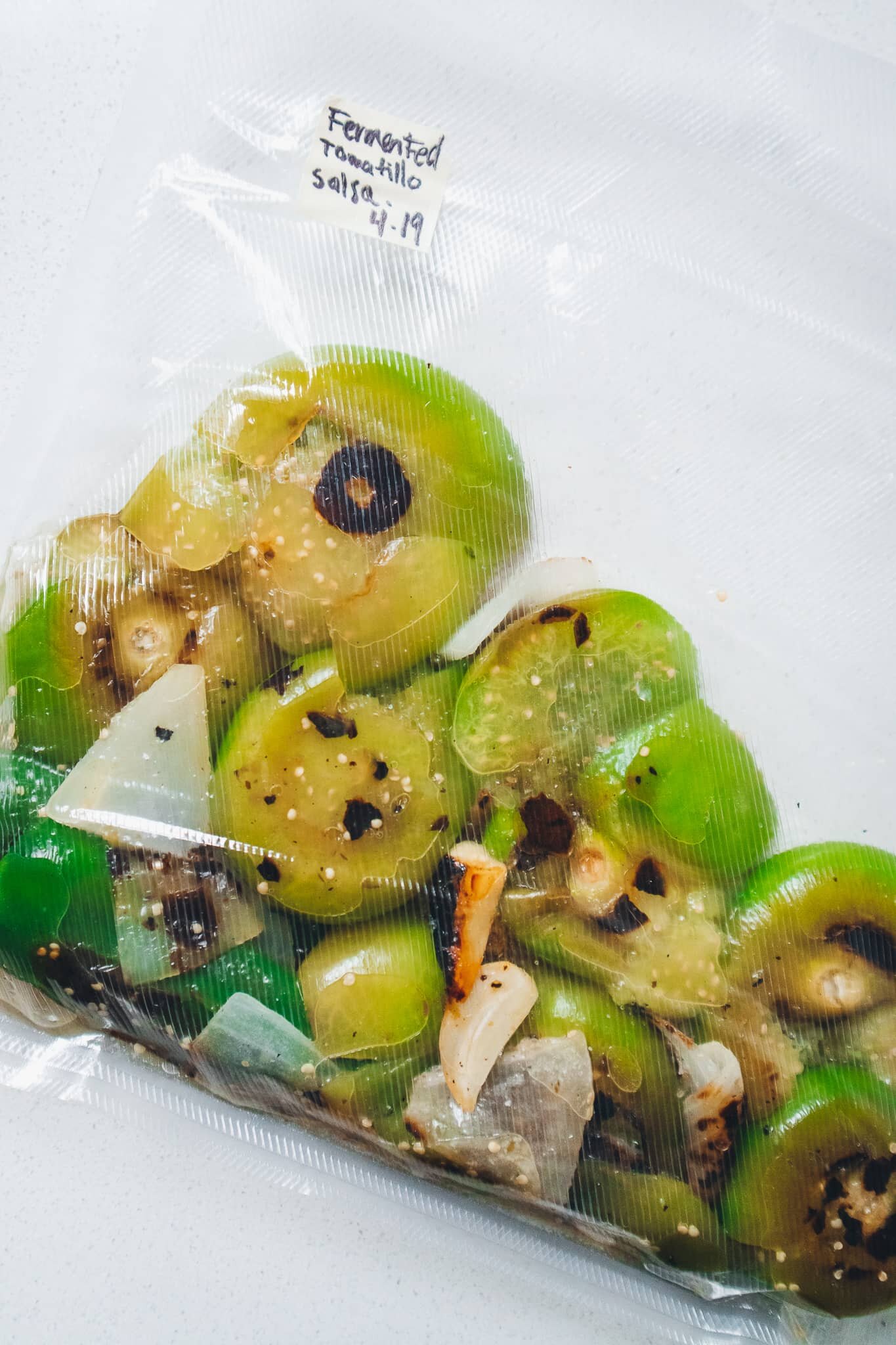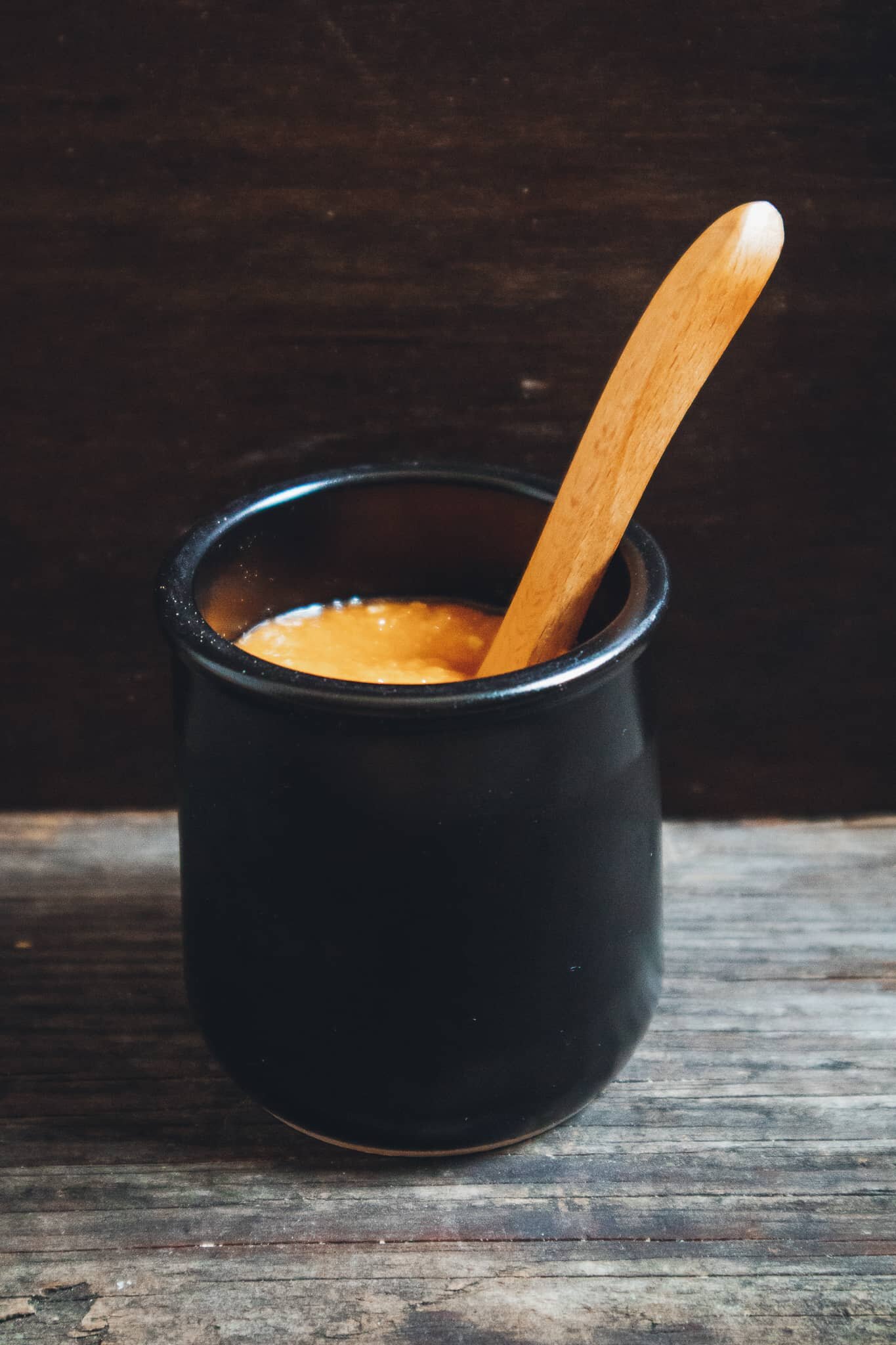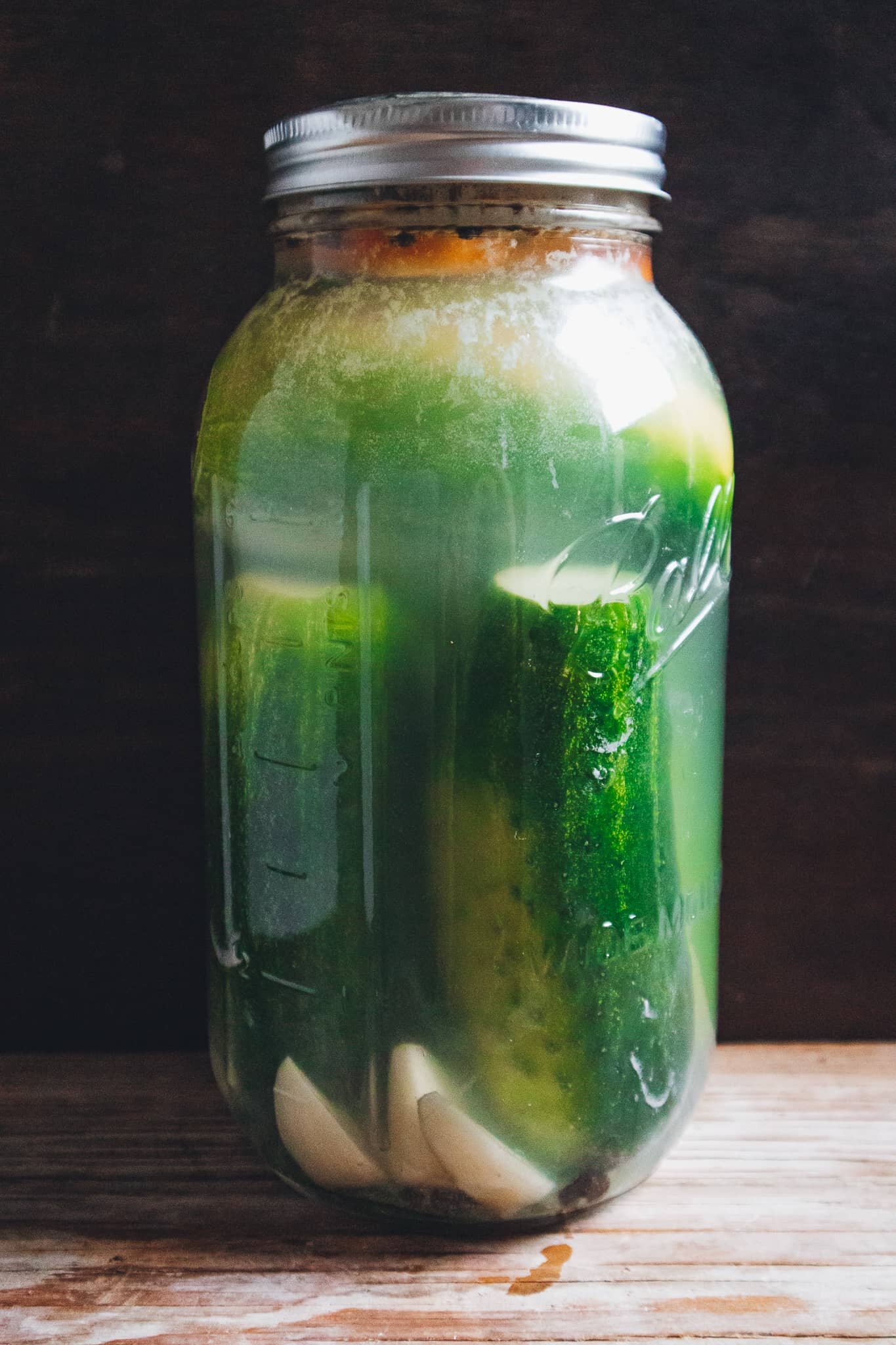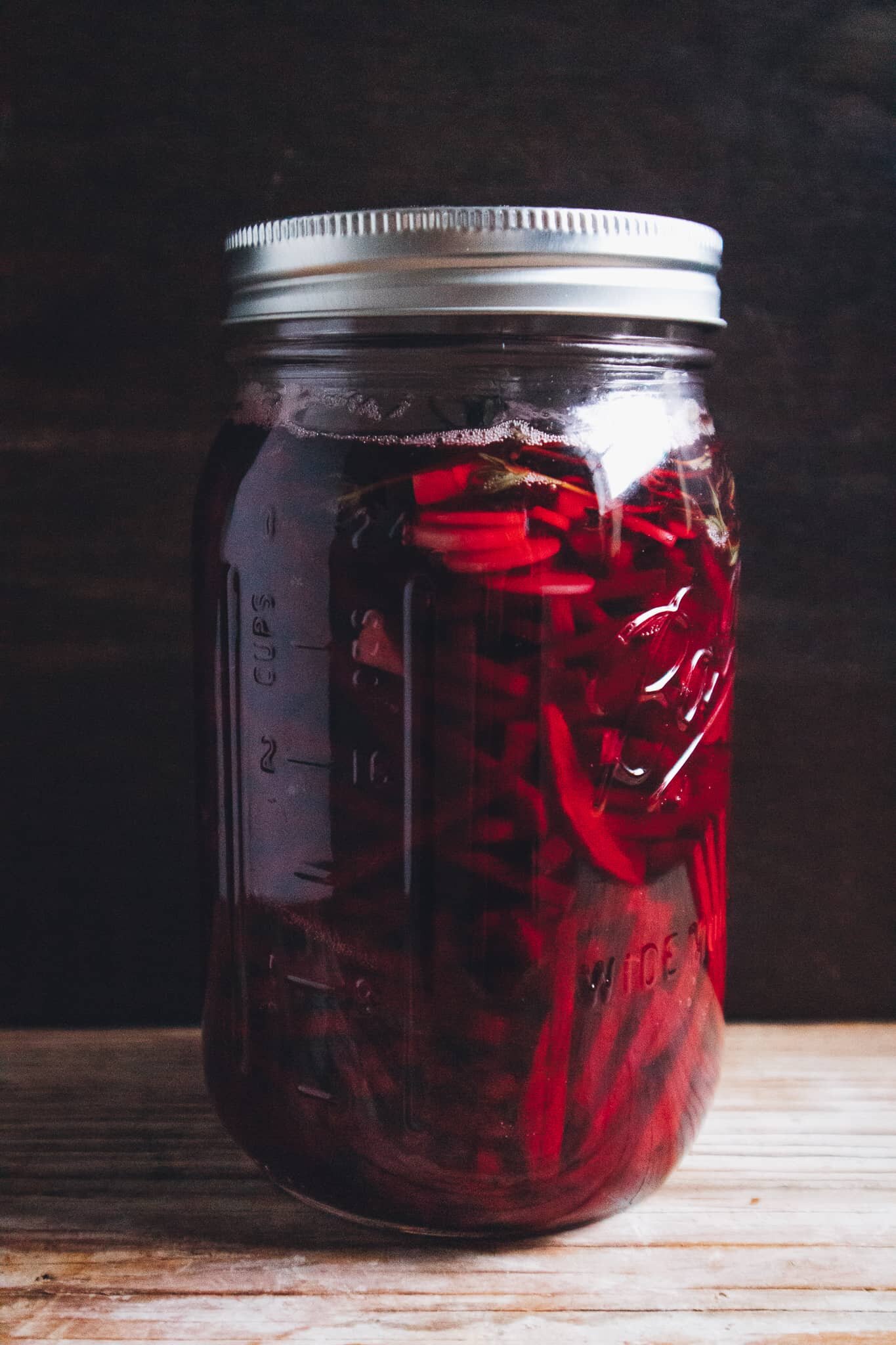Fermented Habanero Salsa
June 14, 2021
Gluten-free · Nut-free · Soy-free
After all the fermented vegetables I’ve been experimenting with lately, you know I had to try fermenting chilis! And what better reason to ferment chilis than to make salsa of course.
This salsa is crazy good – it’s got that acidic note characteristic of fermented foods. It’s not that strong, just has a small kick that’s delicious on top of basically any Mexican food.
Interestingly, fermenting the habaneros removed some of the spicinesses, so they’re not as spicy as they would be raw. I don’t know if this is something that always happens when fermenting chilis, so I’ll have to ferment more to see!
Substitutions:
-
Use tomatoes instead of tomatillos
Great for:
In your tacos, quesadillas, tostadas, and pretty much all Mexican food! Goes well with corn dishes, stews, soups, and with plant-based proteins.
Basic Rules for Fermenting
Before you start any kind of fermenting, it’s important to understand these basic rules that apply to all fermentation processes to ensure a safe environment and safe food.
-
Clean and sanitize your workspace before doing anything else. You can use hot water and soap, white distilled vinegar, or at least 60% alcohol.
-
Sanitize your fermenting jar and any tools you’ll be using. To do this, you can either run everything through the dishwasher or place your jar and tools into a pot full of boiling water and boil for 5 minutes.
-
Wash your hands thoroughly.
Notes:
The ideal temperature for this lactic acid fermentation is between 64.5- 71.5 F.
In this fermentation, we want to create lactic acid bacteria, which is tolerant to high salt concentrations.
Make sure to use filtered water. Regular tap water contains chlorine, which will inhibit the fermentation process.
Fermented Habanero Salsa
Yields 420ml
175g habanero peppers, destemmed
96g tomatillos
29g white onion
10g garlic
350ml water
7g sea salt
-
Add habaneros, tomatillos, onion, and garlic to a sterilized 1 qt jar.
-
In a separate bowl, combine the water and salt. Whisk to dissolve the salt, then add the salty water to the jar with the rest of the ingredients, leaving about 1 1/2-inch space from the top.
-
Place a weight on top to keep the vegetables submerged in the brine. This can be a sanitized stone, a ziplock bag filled with water, or a piece of cheesecloth. Loosely screw the top on and store in a safe place at room temperature (ideally 65-70ºF) for at least 5 days.
-
After 5 days, take out one of the habaneros and taste a little bit of it. If you like the level of acidity, go on to the next step. If you want it more acidic, leave to ferment for a few more days. The longer you ferment it, the more acidic it will become.
-
To make the salsa, drain the vegetables, reserving the brine. Transfer the vegetables to a high-speed blender, placing the tomatillos in first, followed by the habaneros, then garlic and onion. Blend on high until combined into a homogenous sauce. If your blender is having a hard time, add a splash of brine or filtered water (taste the sauce for salt first. If it’s salty enough, just use water. If not, use the brine). Store in an airtight container in the fridge for up to 2 months.













be the first to comment